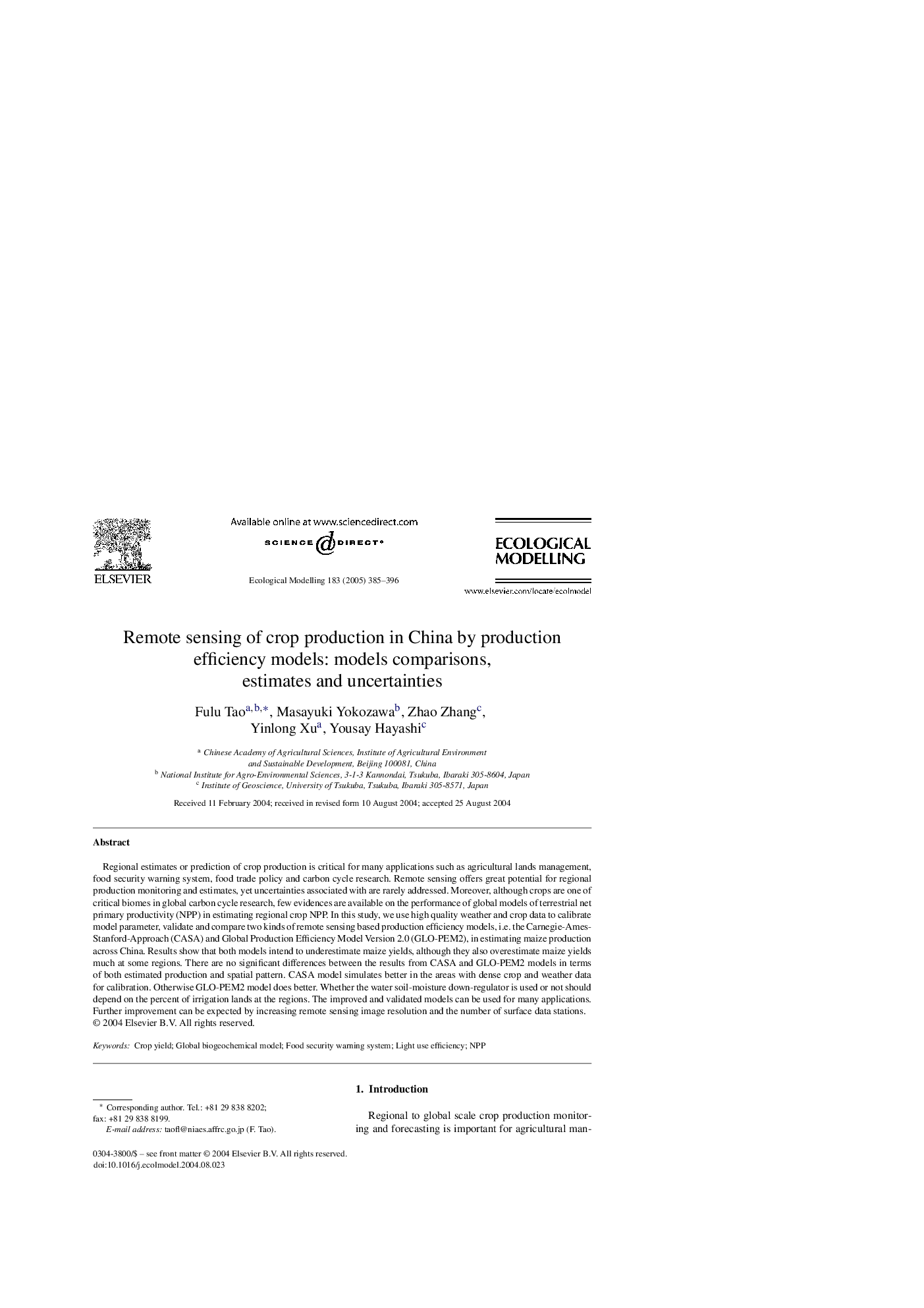| Article ID | Journal | Published Year | Pages | File Type |
|---|---|---|---|---|
| 9443553 | Ecological Modelling | 2005 | 12 Pages |
Abstract
Regional estimates or prediction of crop production is critical for many applications such as agricultural lands management, food security warning system, food trade policy and carbon cycle research. Remote sensing offers great potential for regional production monitoring and estimates, yet uncertainties associated with are rarely addressed. Moreover, although crops are one of critical biomes in global carbon cycle research, few evidences are available on the performance of global models of terrestrial net primary productivity (NPP) in estimating regional crop NPP. In this study, we use high quality weather and crop data to calibrate model parameter, validate and compare two kinds of remote sensing based production efficiency models, i.e. the Carnegie-Ames-Stanford-Approach (CASA) and Global Production Efficiency Model Version 2.0 (GLO-PEM2), in estimating maize production across China. Results show that both models intend to underestimate maize yields, although they also overestimate maize yields much at some regions. There are no significant differences between the results from CASA and GLO-PEM2 models in terms of both estimated production and spatial pattern. CASA model simulates better in the areas with dense crop and weather data for calibration. Otherwise GLO-PEM2 model does better. Whether the water soil-moisture down-regulator is used or not should depend on the percent of irrigation lands at the regions. The improved and validated models can be used for many applications. Further improvement can be expected by increasing remote sensing image resolution and the number of surface data stations.
Keywords
Related Topics
Life Sciences
Agricultural and Biological Sciences
Ecology, Evolution, Behavior and Systematics
Authors
Fulu Tao, Masayuki Yokozawa, Zhao Zhang, Yinlong Xu, Yousay Hayashi,
